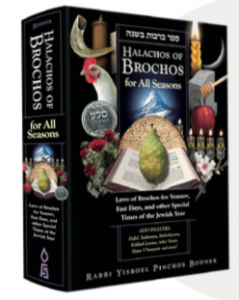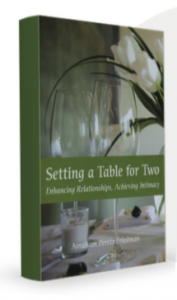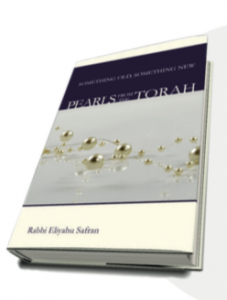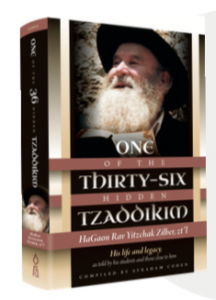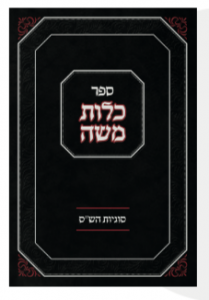Reviews in Brief: Spring 2019
Halachos of Brochos for All Seasons
As Orthodox publishing exploded in the 1980s, Rabbi Pinchos Bodner held a unique role in its development. He published his own books on halachah that earned a special place, particularly his Halachos of Muktza and Halachos of Brochos. He took extremely complex subjects and methodically broke them down into clear sections, explaining all of the laws in simple English. Any person with even a limited background could master the otherwise obscure laws he covered. Additionally, his Hebrew footnotes provided deeper discussion and textual references for those with a more scholarly background.
Rabbi Bodner particularly excels in solving a need that people do not even realize exist. Before his book on muktzah, no one was asking for such a book. After it was published, it became indispensable to a quality Torah library. Rabbi Bodner has continued publishing fine works of halachic scholarship over the subsequent years. His latest publication is a masterpiece. Before I saw the book, I had never conceived of a work covering the various blessings throughout the year. Now that I have read it, I don’t know how we survived without it.
In Halachos of Brochos for All Seasons, Rabbi Bodner addresses each holiday one by one, discussing all the halachic questions on the blessings of the holiday. He covers candle lighting, Kiddush, Shehecheyanu, bentching and seasonal additions to prayer. For Rosh Hashanah, he discusses the blessings on the shofar. For Yom Kippur, how to recite 100 blessings without eating or drinking. For Shavuot, he addresses questions that arise from snacking all night and drinking multiple cups of coffee. For Tishah B’Av, he discusses a brit milah and pidyon haben that are held on the fast day. These are only some of the many detailed issues he covers with his characteristic organization and clarity. This book is a comprehensive resource for anything relating to holiday blessings, the kind of text worth reviewing in advance of a holiday and keeping handy in case questions arise.
Rabbi Bodner has changed one important aspect of his books. In his earlier works, he published lists of questions he had asked leading authorities like Rabbi Moshe Feinstein. In this latest book, Rabbi Bodner no longer has access to long-deceased scholars. However, in his footnotes he cites broadly from secondary literature about the views of Rabbi Moshe Feinstein, Rabbi Shlomo Zalman Auerbach and Rabbi Yosef Shalom Elyashiv.
Setting a Table for Two: Enhancing Relationships, Achieving Intimacy
In 1992, Rabbi Avraham Peretz Friedman published a book that would become standard reading material for Orthodox couples prior to marriage. His Table For Two teaches the basic lessons needed for a successful marriage, which boil down to applying to marriage the skills of being a good person. Readers are told ideas that should be natural, but in fact need to be taught and reviewed time after time; for example, focusing on listening to your spouse; setting aside time in your busy schedule to communicate, and treating your spouse respectfully in private and particularly in public.
Rabbi Friedman explains why these skills are important from a Jewish perspective, using Torah lessons and stories as a guide. Significantly, he does not sprinkle a Torah topping onto an essentially secular lesson; his messages emerge from the Torah. He applies basic Torah concepts to contemporary life in an accessible and enjoyable way. This book teaches how to fulfill interpersonal commandments properly.
Table For Two was such a best-seller because every individual needs to be figuratively hit over the head with the common sense inherent in its lessons. Basic decency is so hard when life pressures mount and our selfish survival instincts take control. Rabbi Friedman takes great care to speak realistically. We will not be perfect spouses, which means that we can all improve our behavior.
In this twenty-fifth anniversary revised edition, Setting a Table for Two, Rabbi Friedman revisits the book with the insight of two-and-a-half decades of feedback. One insight he adds in this new edition deserves special mention: “It is not possible to overstate the disastrous repercussions of teasing, sarcasm, cynicism, impatience, laziness, self-absorption, or neglect in a home.” In the revised book, Rabbi Friedman adds a synopsis of another book he published later—Marital Intimacy: A Traditional Jewish Approach, a conceptual guide to the physical side of marriage. Setting a Table for Two is an essential guide to communication, love and success in marriage. It deserves frequent review to help us improve ourselves and our relationships.
Pearls From the Torah: Something Old, Something New
The rabbinate as a profession contains multiple paths and areas of specialization. These include the pulpit, education and other specific concentrations, each of which requires unique skills. Many rabbis master one or two of these areas after years of honing their trade. Rabbi Dr. Eliyahu Safran is the rare individual who has risen to the top of many different fields in his remarkable rabbinic career(s). As a synagogue rabbi, a school principal, a kosher expert, a published author and a sought-after orator, he has refined his immense natural talents on many different levels to allow him to succeed in multiple roles.
Along the way, Rabbi Safran has published essays on the weekly Torah reading. On the one hand, his style is classical. He writes with the eloquence of a prior generation, carefully following the best practices of style and form. His metaphors pierce; his parables hit home. His sermons resonate with the tone of a practiced preacher, a rabbi who knows how to elicit interest with the careful turn of phrase and pointed question.
On the other hand, Rabbi Safran stands firmly in the twenty-first century. Famously, he met his beloved wife online. He is keenly aware of the challenges of loneliness, the temptations of cynicism, the subtle yet insidious subversion of Torah values we face every day. He addresses the dangers of cookie-cutter education: “We must learn from Yaakov’s example and always encourage our children and students to develop and pursue their unique strengths and gifts.” The importance of acceptance of others: “Preparing to pray, like preparing to receive the Torah, asks of me that I embrace the community. I must love my fellow Jews.” The necessity of tradition: “Authentic Jewish experience is rooted in yesterday’s Jewish behaviors and precedent. We do not live in a vacuum of time but nestled within the fullness of Jewish experience and teaching.” The emotional value of giving: “If you ever feel down, reach out to someone else rather than hope someone reaches out to you. You will be amazed at how good you will feel.”
Something Old, Something New is a brilliant rabbi’s classical sermons about contemporary problems. Rabbi Dr. Safran brings his formidable talents to bear on the questions of modern life, showing that the Torah remains eternally relevant.
One of the Thirty-Six Hidden Tzaddikim: HaGaon Rav Yitzchak Silber zt”l: His Life and Legacy, As Told by His Students and Those Close to Him
Rabbi Yitzchak Silber’s memoirs, To Remain A Jew, became an instant classic on publication. In it, he tells the story of his struggle to remain an observant Jew in the Soviet Union. Throughout the book, the reader is astounded by the author’s commitment, faith and strength of character. It is always incongruous when someone purportedly humble publishes his life story. However, his experiences deserve dissemination because of the unique challenges he faced under Communist oppression and the lessons of his unshakable commitment. Because of this, Rabbi Yitzchok Hutner insisted he publish his memoirs.
And yet, call me skeptical but I always wonder how much is true. Everyone sees reality through his own eyes, particularly regarding his own successes and failures. An author chooses what to omit and how to describe the circumstances. I was always nagged by the suspicion that To Remain A Jew is too remarkable to be true. Not too miraculous, because the book isn’t about miracles that Rabbi Silber experienced or invoked, but too outrageous with regard to the author’s unfailing energy and consistency.
After Rabbi Silber’s passing, one of his students, Rabbi Avraham Cohen, collected personal testimonies about Rabbi Silber. The book, One of the Thirty-Six Hidden Tzaddikim, consists of hundreds of pages of brief stories of individuals’ interactions with Rabbi Silber. His children reveal incidents of their father’s humility and wisdom. Others tell more surprising tales. There is a story from a taxi driver who would occasionally be hired to drive around Jerusalem for an hour while Rabbi Silber, recognizing that the driver’s busy schedule precluded his learning Torah, taught him about the weekly Torah reading. A couple that was civilly married in Russia needed a Jewish wedding in Israel. Unfortunately, it was the day after 9/11 and all the stores in Tel Aviv were closed. Rabbi Silber conducted the chuppah in his apartment and, due to the lack of a wedding ring for this kosher wedding, he gave them his Kiddush cup, which he did not accept back after the ceremony; it was his gift to the couple.
Rabbi Zalman Nechemiah Goldberg tells how Rabbi Silber would arrange gittin from recalcitrant husbands, often paying them large amounts of money to comply as well as paying the scribes to write the gittin. Rabbi Goldberg explains that he and others who worked for the Rabbanut received a salary for the very things that Rabbi Silber did at his own expense. The book contains many stories from witnesses about the incredible effort Rabbi Silber put into resolving difficult divorces.
This book is hard to understand without first reading To Remain A Jew. Those who have read the original will find here perspectives on some of the stories in the book and many more from his life in Israel.
Rabbi Gil Student writes frequently on Jewish issues and runs Torahmusings.com. He is a member of the Jewish Action Editoral Board.
Sefer Kelot Moshe
Reviewed by Chaim Goldstein
There are halachic specifications governing all sorts of different acquisitions. Jewish law has a specific way in which land, for instance, must be acquired. There are specifications governing how one acquires a moveable object. And, of course, there are laws explaining how a marital ceremony is concretized. But, as Rabbi Moshe Genack asks in his introduction to Sefer Kelot Moshe, how does one acquire a relationship with God? His answer—part of a moving tribute to his distinguished relative, Rabbi Avraham Genachovsky zt”l (1936-2013), rosh yeshivah of Yeshivas Kochav MiYaakov, the Tchebiner Yeshiva in Jerusalem—is clear. In order to acquire a relationship with God one must be moser nefesh—offer a part of their very self in the service of God.
Indeed, an ethic of self-sacrifice and personal generosity is evident throughout this volume. The author, an emerging leader in the Jewish community, possesses a singular ability to distill complex Talmudic discussions into brilliant conceptual categories. Though this work was written as a tribute to Rabbi Genachovsky, each page radiates a rare warmth that provides entrance into the rarefied air of Talmudic interpretation. While written in rabbinic Hebrew, the volume nonetheless seems to be geared for both scholars and laymen alike. As Rabbi Elya Ber Wachtfogel, rosh yeshivah of Yeshiva of South Fallsburg, New York, remarks in his introductory letter, this work is “a remarkable sefer which explains the subjects under discussion in detail and with logic.” Similarly, Rabbi Asher Weiss, in his introductory approbation, admits that “I was amazed by how the author descended to the depths of important sugyot, with great breadth of knowledge and straightforward logic.”
The sefer includes an intriguing story about Rabbi Genachovsky, who encouraged the author to publish his chiddushim. Although Rav Avraham himself did not sing zemirot on Shabbat, he would sometimes ask his guests to sing. On one such occasion, those present noticed that during the course of one song, Rav Avraham had completed seven dapim of Masechet Taanit. Apparently, Rav Avraham would review seven dapim each day in order to complete Shas every year, and he took advantage of the opportunity provided by his guests’ singing interlude to complete his allotment.
Although the title alludes to the completion of the Tabernacle, we hope that this is only the beginning of the author’s significant contributions to Torah literature.

